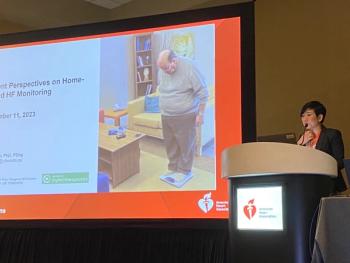
Heart Rate, Movement May Used to Predict VO2 max
Researchers investigated whether it might be possible to use AI and machine learning to develop a model that could use data from everyday activity (rather than workouts) to accurately predict VO2max.
A new artificial intelligence (AI) model may make it easier to assess patients’ fitness without the need for expensive in-clinic testing or at-home exercise tracking.
Investigators from the University of Cambridge in Great Britain
say they have developed a model that can predict a patient’s maximal oxygen consumption (
Visiting researcher
“Low VO2max is a stronger
Yet, calculating a patient’s VO2max is costly and requires a costly, rigorous in-clinic exercise test, which in practice means such testing is rarely done, he said.
“These tests require reaching one's maximum heart rate, something not possible for most people,” he said.
Some commercial smartwatches have VO2max tools, but those approaches require users to track their workouts, meaning such readings are not available for people who do not exercise or do not log their exercise. Moreover, the models commercial smartwatches use to predict
VO2max are generally not made public and thus not verifiable by independent researchers.
Spathis and colleagues wondered whether it might be possible to use AI and machine learning to develop a model that could use data from everyday activity (rather than workouts) to accurately predict VO2max.
“There's a well-known, almost-linear relationship between heart rate and VO2max when we exercise, however this association becomes non-linear in lower heart rates (where people spend most of their time),” he said. “As a result, estimating nonexercise VO2max is a much harder problem, but potentially more meaningful.”
The study outlining Spathis and colleague’s model was
The investigators used data from more than 11,000 people participating in the
Spathis said he believes the model could one day be useful as a standalone assessment of patient health.
“Considering that the best nonexercise benchmark in clinical practice to understand your overall fitness and mobility is the 6-Minute Walk Test, there's plenty of additional information from the everyday lives of individuals our models can incorporate,” he said.
He noted that VO2max does not change abruptly, so it would be a meaningful way to see how patient fitness changes over time. However, he added that other biomarkers are also worthy of evaluation, such as heart-rate variability,resting heart rate, and deep sleep.
“By tracking a range of health metrics, individuals can get a more complete picture of their health and can make more informed decisions about their health and well-being,” he said.
Investigating those data will require access to the data generated by fitness trackers and smartwatches. Spathis said most trials have a standardized process of obtaining patient consent to use their data. That has led to the ability to publish studies of significant size, though Spathis said the largest datasets are largely walled off.
“However, the manufacturers of these wearables such as Fitbit/Samsung usually own the largest datasets of this type (hundreds of millions of users) which academics cannot easily access,” he said.
Newsletter
Get the latest industry news, event updates, and more from Managed healthcare Executive.





















































